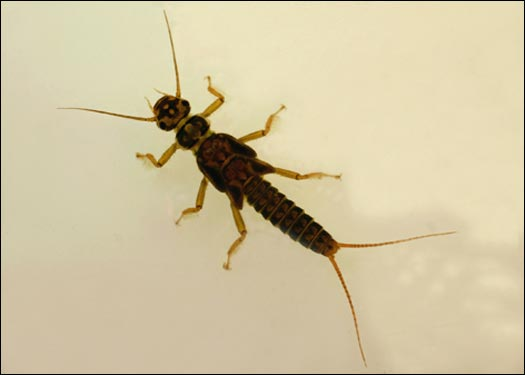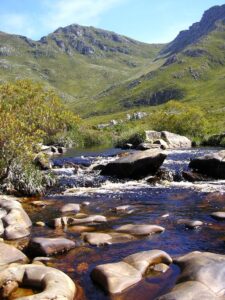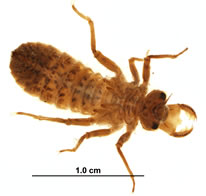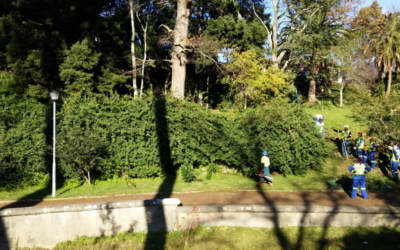The health of a river is often determined by the quality of the water that flows along its course. Due to differences in geology and vegetation, rivers around the country vary with regards to what is termed “healthy”. For example rivers in the Western Cape tend to have a lower pH (more acidic) than rivers up country. To account for these differences in the chemical characteristics of rivers around the country, scientists have developed the South African Scoring System (SASS).
The picture above is of the Palmiet River and on the bottom the Crocodile River in Mpumalanga. Notice the difference in colour which is indicative of different chemical characteristics.
This system incorporates the assessment of biota (living organisms) in rivers as a method of determining the condition or “health” of a river. Aquatic benthic macroinvertebrates (water insects that live on the riverbed) in particular, are recognised as valuable organisms for bioassessments. This is largely due to their visibility to the naked eye, ease of identification and rapid seasonal life cycle. For each genus of aquatic insects a score/number has been assigned to them, with the score being higher for those insects more susceptible to chemical changes in the river. Therefore, a high SASS score for a river is correlated to good water quality or a “healthy” river.
 (ecologyadventure.edublogs.org)
(ecologyadventure.edublogs.org)
Above is a picture of a dragonfly larva and at the bottom a stonefly nymph. The dragonfly larva is fairly common and can withstand substantial changes to a river, while the stonefly nymph is very sensitive to changes in the water and therefore has a high SASS score attached to it.
A potential problem for this method may arise in a situation where a stream or river flows through an urbanised landscape. Within these landscapes the habitat of a river, both in-stream and riparian is often altered, degraded or quite simply lost through development. This in turn may result the composition of insect communities, as available habitat can be one of the most limiting factors affecting aquatic insect communities. Therefore, if one were to use SASS to evaluate and monitor the health of a river in an urban landscape, it is not always easy to determine whether the absence of certain aquatic insects is due to poor water quality or due to loss of habitat.
It is without exception that rivers flowing through an urban landscape are poorer, in terms of biodiversity, than rivers flowing through a natural landscape and can therefore be considered as comparatively unhealthy. However, it is important to recognise that an urban river may possess good water quality without the presence of particular aquatic invertebrates.





